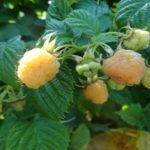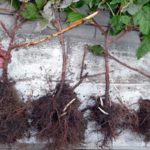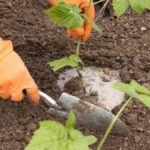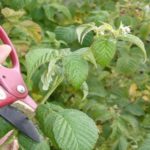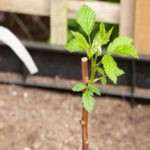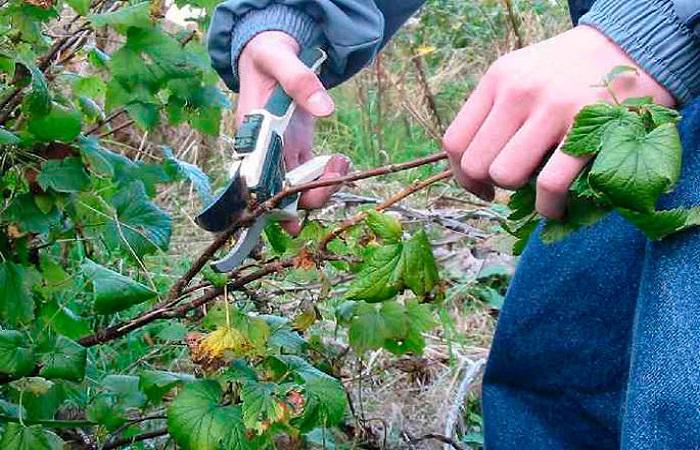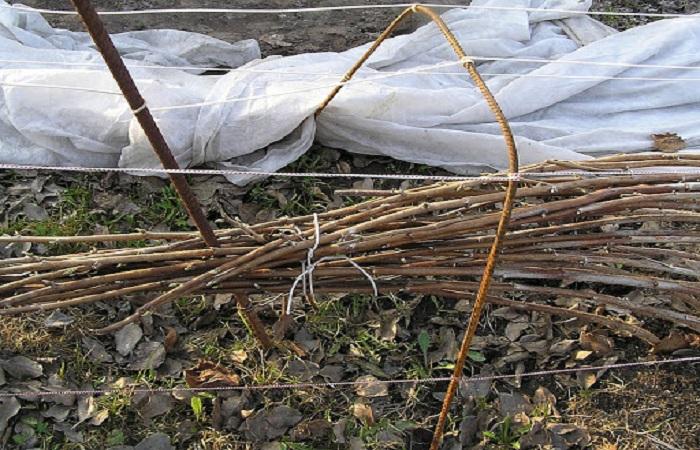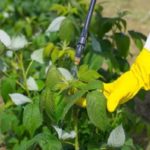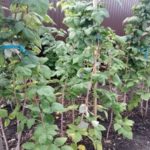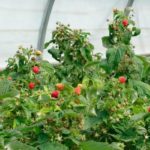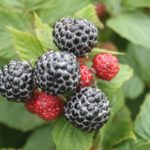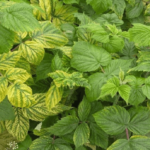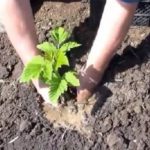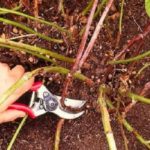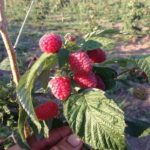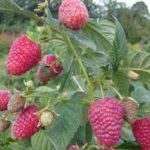It is difficult to find a cottage or garden plot without raspberry bushes. Berries are tasty and healthy both fresh and processed. When describing Beglyanka raspberries, it is important to note the extraordinary yellow color of the fruit. Growing and caring for bushes is not difficult, so even a novice summer resident can cope with growing raspberries. If you follow the rules of agricultural technology, you can collect 2-3 kg of berries from one bush.
Description and characteristics of raspberry Beglyanka
The variety is a winter-hardy species and is distinguished by early harvest ripening. The bushes grow medium-sized, slightly spreading. During the season, the bush produces 6-10 shoots. A non-standard difference from the common red raspberry is the amber hue of the fruit.
From one hundred square meters of planting you can harvest 4.5-7.7 kg of raspberries. The pulp of the yellow berries is tender, with a slight sourness.
Advantages and disadvantages of the variety
Before planting raspberry bushes of a certain variety, any summer resident evaluates its advantages and disadvantages. Positive qualities of the Runaway:
- original appearance of berries;
- frost resistance;
- ease of care for low bushes;
- resistance to fungal diseases;
- pleasant taste of berries.
The disadvantages include the presence of thorns on the stems; the berries are poorly stored and transported.
Landing
The productivity of bushes and ease of care depend on the method of planting seedlings. The optimal planting period is early spring. For breeding Runaways, two methods are used.
In the holes
It is advisable to plant raspberries in separate bushes in regions with a humid climate to ensure ventilation of the plants and eliminate the risk of the appearance and spread of diseases. Main stages of work:
- on the site, a layout of holes is outlined: row spacing is made 08-1.0 m wide, the distance between holes in a row is 0.35-0.4 m;
- holes are dug with a diameter of 0.3-0.35 m, a depth of 0.4-0.45 m;
- A mixture of organic and inorganic fertilizers is placed on the bottom, which is covered with fertile soil with a layer of 10-12 cm.
The seedlings are placed in the holes, carefully straightening the roots. The holes are filled with soil, which is compacted and watered.
Trenches
The method saves space, so it is recommended to use it in compact areas.Planting consists of several stages.
- On the site, trenches are dug 0.3-0.35 m deep and 0.4-0.45 m wide. The distance between rows is 0.8-1.2 m wide.
- A layer of peat, compost or humus mixed with soil, 0.15-0.2 m thick, is laid on the bottom.
- Raspberry seedlings are planted in rows at intervals of 0.3-0.5 m.
It is recommended to place the trenches in the north-south direction so that all plants are illuminated evenly.
Plant care
When growing Beglyanka raspberries, they adhere to standard agricultural techniques: watering, fertilizing. You also need to devote time to forming bushes and preparing the plant for wintering.
Watering and fertilizing
When watering, take into account the vegetative growth phase of the bushes. At the beginning of the season, watering is needed for the growth of young shoots, the growth of green mass and the formation of ovaries. Then it is important to ensure soil moisture during the fruiting period. After harvesting, the bushes are watered in moderation so as not to stimulate the growth of new shoots. During the dry period, the bushes are watered once every 7-10 days.
Trimming Features
Bushes are formed at the beginning and end of the season. The spring procedure includes sanitary pruning of damaged shoots. In summer, diseased, dried leaves and underdeveloped stems are removed.
In the fall, cut off unnecessary green shoots, damaged or shriveled branches. Old branches that will no longer bear fruit are also cut off.In this case, it is necessary to take into account the characteristics of the variety - Beglyanka bears fruit on the shoots of the current season and last year.
Preparing for winter
The Beglyanka variety tolerates low temperatures well, so in regions with mild frosts, raspberry plantings are not specifically covered. To prevent damage to the branches by strong winds, it is recommended to tie the shoots in each bush.
If a frosty winter with very low temperatures is expected, it is advisable to wrap the bushes with covering material. It is not necessary to tilt the stems to the ground and fix them.
Reproduction methods
It’s easy to grow raspberries on your own plot. For plant propagation, root suckers are most often used, which are separated from the bush in the spring or in late August. Planting of young shoots is carried out according to the standard scheme.
How to deal with diseases and pests
The main dangers for the variety are spider mites and raspberry mosquitoes. To prevent damage to the bushes, planting raspberries is sprayed with products containing karbofos. You can destroy insects mechanically - shaking bugs from bushes.
As a preventive measure, it is recommended to loosen the soil throughout the season and monitor the “cleanliness” of the base of the bushes (cut out excess shoots and weeds). Next to raspberries, you can plant phytoncidal plants (mustard, dill, calendula), which repel harmful insects.
Cleaning and storage
For harvesting, it is advisable to allocate morning or evening hours in dry weather. According to reviews from summer residents, Beglyanka raspberries are not suitable for long-term storage. Therefore, large fruits are laid in no more than 4-5 layers. The harvest is stored in the refrigerator for 4-5 days.
Growing non-standard raspberry varieties on site is becoming increasingly popular.The Beglyanka variety is distinguished by an exotic amber-yellow hue of berries. An important advantage of raspberries is their long ripening - fruiting begins in late June and ends at the end of September.


